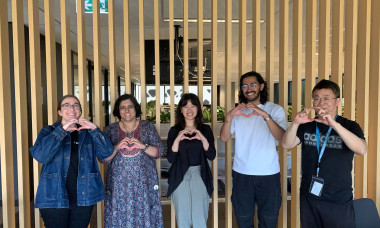What bad student satisfaction tells us about good learning
The student satisfaction results for 2020 were always going to be grim.
After a period of lockdowns, learning at a distance and loneliness, Australia’s university students delivered earlier in 2021 what many in the sector had expected: a collection of scathing statistics about their student experience that will put many unis back in a corner licking their wounds.
Then again, perhaps it’s a reflection of just how much universities did achieve. Even in such times, 68.4% of students still said they were satisfied with their undergraduate education, despite this dropping precipitously 10 percentage points from 78.4% during the calendar year 2019.
But their engagement was at an all-time low. This year’s Quality Indicators for Learning and Teaching Survey found only 43.2% of students surveyed said they were satisfied with learner engagement, the worst result since the survey began in 2012, and down on a more respectable 59.9% in 2019.
What can this annus horibillis teach us about creating a better student experience?
1 Online learning isn’t everything
Online learning has a strong place in the future. But it’s not everything. Following 2020, universities will need to be closely attuned to the preferences and feedback of learners of different age groups, types and demographics, to see how they respond to online learning in different formats.
Whether whole years or semesters are taught online to international students offshore, or portions of group activities are facilitated online for local students, universities will need to ensure their online delivery is first and foremost serving the learning and experiential needs of their students.
2 Students crave contact and connection
Student experiences and engagement is achieved through connection. Whether it’s in person or in online communities, it’s clear most students crave contact with their institution, teachers and peer groups, and need this in order to be satisfied with their experience and achieving at their best.
Universities will need to ensure their future steps treat students as human beings with real needs for meaningful connection. While technology can support educators in achieving this, students are telling us it should facilitate – not replace - these needs to avoid hollowing out their experience.
3 Students want genuine value
Students want to ensure the learning experience and outcomes they expect and invest in are what they receive. If they are paying for an on-campus experience from a prestigious university, as well as the employment opportunities that flow from it, then they expect to get what they paid for.
While universities could not deliver completely on what students expected in 2020, this is a lesson; universities will need to ensure that, when they are pricing their various education products and experiences, they are following through on the expectations and outcomes that students want.
The best of both worlds?
Blended learning may be the future our students are indicating they want now. A flexible mix of the best of online, combined with that all-important face-to-face contact, students can lean on both the technology and people around them to support their learning, experience and outcomes.
If so, blended learning will need to be applied flexibly to different cohorts depending on preferences. For example, international students based in their home countries may be open to online for whole slabs of learning, while local students may want more community, particularly in their first year.
Good learnings can come from bad results. We just have to ensure this happens in the future.






